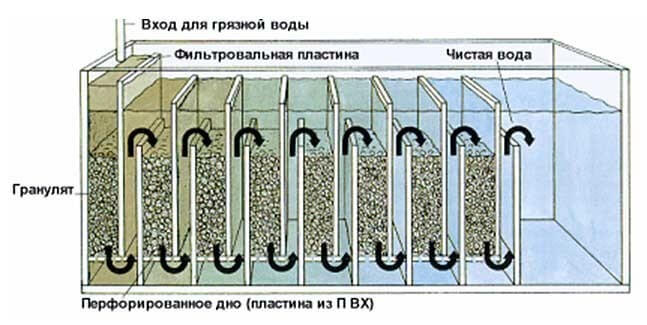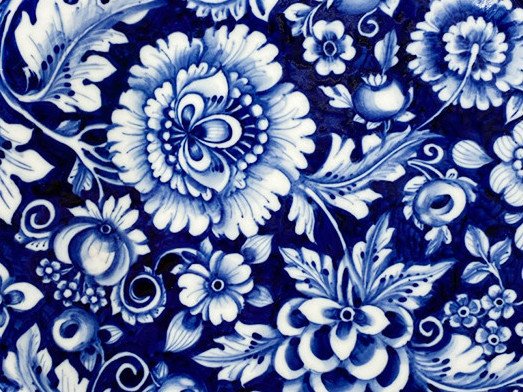Can you imagine that your tap water was running through sewer pipes just a while ago? There was garbage floating in it, along with myriads of harmful bacteria and household cleaning products. But the water is clear and pure now, and you use it to wash up. In this article, we are going to tell you about the journey water makes from discharge pipes to water bodies, and then to your bathroom or kitchen.
Waste water is treated by a system of special facilities and then released into natural reservoirs. There, the treated waste water gets mixed with the natural one and directed to other water treatment plants and following rounds of further treatment and disinfection there, the water ends up in our apartments. This water treatment process is most important for human health and the entire environment, since untreated water may harm the flora and fauna of water bodies.
Part 1. Waste Water Treatment
When washing up, we rub the plates with a cleaning product thoroughly and then rinse them till they squeak with clean water. The water with concentrates and food waste and fat goes into the depths of the sewer system. It is to fill the tank of the main pumping station and move to the mechanical treatment shop.
Mechanical Treatment
This stage does most of the work – up to 75% of the treatment.
Fine grids are used to catch domestic garbage: cans, bottles, paper, rags, cotton wool, packaging, food waste, etc. After the grids, the process goes to the micro level. Sand traps are put to use. They are needed to remove sand, pebbles, and debris. Particles that settled are pumped from the bottom and sent for further processing. The next stage is fat traps. Similar to sand traps, they catch oils, petroleum products, etc. as well as fats. The substances thus separated are removed from the water surface with scrapers.
Then the water is left for sedimentation the way our grandmothers did it as they filled 5 liter jars with water for flowers, but on a much greater scale. That clears water from suspended matter and helminth eggs. Two-tier sedimentation tanks are the best. The pure water goes into the first tier while silt and other waste accumulate in the second one. The principle is most simple: gravity provides for the sedimentation of harmful particles. Coagulants and flocculants are often used to accelerate the process. They make small particles stick to each other and sink faster. Another trick the sedimentation tank has is the reservoir design: the pipe diameter widens at the exit, slowing the flow and increasing sedimentation. Various membranes, filters and septic tanks may be used in addition. Water is also treated to remove phosphates from detergents, which cause eutrophication or bogging. They dry hand skin too, unless gloves are used.
Источник: musormaster.ru
Biological Treatment
The new phase comprises biological treatment. At this stage, other types of contaminants are removed from the water: organic substances, nitrogen, phosphorus. Bacteria and protozoan microorganisms that consume harmful contaminants are used for this.
As a first step, the water is put through an aerotank, a reservoir where the water is mixed with active silt (the microorganisms mentioned above). The aerobic microorganisms use oxygen, therefore the water is enriched with O2 in advance. The anaerobic microorganisms work independently and do not need to be fed with additional oxygen.
Then the water goes to secondary sedimentation tanks, where active silt is removed. The microorganisms sink and are then removed from the bottom with scrapes. However, biofilters may be used for this instead. Those are special devices that purify sewage as the waste water goes through a filter containing active bacteria. Granite chips, polyurethane foam and foam plastic can be used as fillers. A biofilm of microorganisms develops on the surface of such particles. They degrade organic matter. The biofilters are followed by secondary sedimentation tanks, and the procedure described above is repeated.
Биологический этап очистки сточных вод
Additional Treatment
Now, the water is considered 90-95% pure. However, the remaining contaminants have to be removed. The water goes through several treatment stages again.
Non-organic compounds are turned into organic ones by using filled plastic disks with a hole in their center. The remaining contaminants are oxidized, after which the water goes to post-treatment filters filled with sand. The water is supplied from the bottom up, washing the filters.
The next step is the final destruction of microorganisms. There are a lot of methods involving: UV, alternating current, ultrasound, gamma radiation, chlorination. Then the water is dumped into a water body. If there is a large amount of waste water to be treated and the treatment facilities are located near populated areas, air purification is added to this long process, in order to remove the offensive smell.
Part 2. Purification of Water from Reservoirs
Our tap water comes to water treatment plants from natural reservoirs and water bodies. The treatment process is performed once again, similar to that used for waste water.
Intake
The website of the Moscow Water and Sanitation Authority (Mosvodokanal), for instance, details how their specialists work with water drawn from water reservoirs and the Moskva River. Similar to the previous type of treatment, the water goes through grids that catch other kinds of waste: branches, leaves and anything that may end up in the river. The water intake has additional air bubble fish protection devices.
Filtration
The water then goes into a filter that consists of many porous straws. The pores are tiny (0.01 µm); such membranes catch even viruses and bacteria. Again, coagulation and sedimentation ensue. Having passed through special plastic plates – lamellas – the water goes for the final decontamination. Here, sodium hypochlorite and ammonia water are put into the water in order to decontaminate drinking water for a long time as it is going to run through pipes from the water treatment plant before it ends up on our plates.
Additional Treatment
In Moscow, ozone sorption and ultrafiltration are used in addition to the classical water treatment technique at the water treatment plant. Simply speaking, water is enriched with ozone and filtered using activated carbon, after which the water flow is split into very small parts by membranes and pumped using different pressure levels. From the interview published on the Moscow Mayor’s website: Director of the Western Water Conditioning Station spoke about new water treatment methods:
“Ozone is the most effective oxidant. It removes metals, synthetic surfactants, synthetic substances, and organic compounds. Moreover, ozone makes water taste and smell fresh. It's like going out into a field after a thunderstorm, and feel the freshness, which is there due to ozone. The characteristics of such water are comparable to those of well water.”
Water Quality Testing
Water safety is checked at Water Quality Control Centers. The Northern Water Conditioning Station in Moscow splits samples into molecules and runs tests for 100 indicators.
“The main indicators measured here include a long list of metals and over 40 organic compounds. For instance, we test water for cadmium, lead, mercury, and thallium on a monthly basis…Water samples from all water conditioning stations and the city supply mains are sent here,” Andrey Salgalov, Head of the Northern Division of the Water Quality Control Center, commented for the web portal mos.ru.
735,000 samples are drawn in Moscow every year, with 2.5 million tests run. Specialists even claim that the water is drinkable but factors such as the quality of water pipes in your building and your metabolism are important as well. The quality of water in other cities can be found on the websites of regional water and sanitation authorities, or one can have water samples analyzed.
Video: mos.ru
Sources:
https://www.mos.ru/news/item/77186073/
https://www.mos.ru/news/item/81669073/
https://www.mosvodokanal.ru/watersupply/quality_control/
Фото на странице и на главной странице сайта: Samuel Sianipar / Фотобанк Unsplash
























